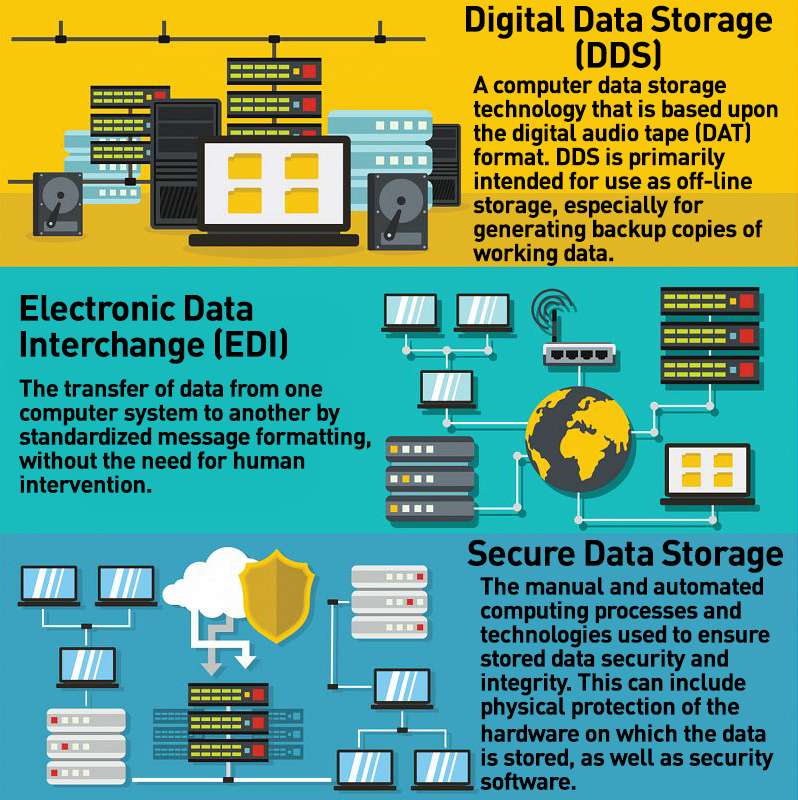Discovering the Relevance of Data Damage in the Context of Computer Safety And Security Services and Protecting Confidential Information
In an era where information violations are increasingly usual, the importance of reliable information destruction can not be overemphasized. Organizations needs to take on stringent measures to make sure that delicate information is not just safeguarded during its lifecycle yet additionally emphatically removed when no much longer required. The techniques utilized for information elimination, combined with conformity to legal standards, play a pivotal duty in keeping discretion and depend on. The ramifications of these practices prolong past mere compliance, affecting a firm's online reputation and functional integrity in the electronic industry. What strategies can companies implement to enhance their data damage protocols?
Recognizing Information Damage
Information devastation is an important component of computer safety that involves the irreversible removal of information from storage devices to stop unapproved gain access to and possible data breaches. In a progressively digital landscape, companies encounter increased dangers related to sensitive information being improperly accessed or exploited. Reliable data destruction safeguards against these dangers, guaranteeing that private dataâEUR" such as consumer info, intellectual residential or commercial property, and monetary recordsâEUR" can not be recuperated after disposal.
Recognizing the relevance of information destruction prolongs past simple compliance with regulative and lawful structures; it is necessary for maintaining organizational honesty and count on. When data is incorrectly managed or improperly ruined, the repercussions can be serious, consisting of economic loss, reputational damages, and legal obligations.

Approaches of Data Eradication

One prevalent method is data cleaning, which includes overwriting existing information with arbitrary patterns numerous times. This technique makes the original information irretrievable, making it a prominent choice for organizations looking for to secure confidential info.
An additional technique is degaussing, which makes use of a powerful magnetic field to interrupt the magnetic domains on storage devices, efficiently erasing the information. This strategy is specifically reliable for magnetic media however is not suitable to solid-state drives.
Physical damage is another durable approach, entailing the shredding or squashing of storage space gadgets. This technique guarantees that information recuperation is essentially difficult, making it suitable for extremely sensitive information.
Lastly, encryption can act as a complementary technique to data removal. By encrypting information before removal, companies can add an additional layer of safety, making certain that also if residues are recouped, they remain inaccessible without the decryption trick. Each method needs to be selected based on the degree of data level of sensitivity and the certain safety and security needs of the company.
Legal Compliance and Information Safety
Organizations must browse a complicated landscape of legal requirements connected to information security, specifically after implementing approaches of information elimination. Various regulations, such as the General Information Protection Law (GDPR) and the Medical Insurance Portability and Responsibility Act (HIPAA), impose strict standards on how companies must dispose and deal with of delicate data. Failing to adhere to these guidelines can lead to substantial lawful repercussions, including significant fines and reputational damage.
Information destruction procedures have to be carefully recorded to show conformity with appropriate regulations and standards. This documents not only functions as proof of adherence to legal commitments but additionally illustrates a commitment to safeguarding sensitive info. Organizations must likewise develop clear plans pertaining to information retention and devastation timelines, ensuring that data is not held longer than necessary.

Furthermore, regular audits and analyses of information damage methods are important to maintain compliance and adjust to progressing legal frameworks (data destruction). By proactively dealing with legal requirements, organizations can reduce dangers related to information breaches and demonstrate their dedication to data safety. Ultimately, focusing on legal compliance in information damage processes is not just a governing responsibility, but a basic element of a robust information safety and security strategy
Impact on Organization Online Reputation
The track record of a company can be substantially influenced by its technique to data devastation and management. In today's digital landscape, where information violations can happen at any minute, the failing to appropriately throw away sensitive info can bring about serious effects. Organizations that inadequately take care of data damage risk revealing confidential client information, which not just violates personal privacy laws however also deteriorates count on among customers and stakeholders.
A tarnished reputation can cause decreased consumer loyalty, as customers come to be internet hesitant to involve with a service that has demonstrated carelessness in safeguarding their data. Adverse publicity surrounding a see this page data breach can have an enduring impact, as potential clients may be hindered by the perceived lack of security. This can result in a direct decline in revenue and market share.
Furthermore, companies that prioritize data destruction as part of their security strategy can boost their reputation by showcasing their dedication to guarding delicate info. By embracing strict data management practices, organizations can not only reduce dangers yet also position themselves as credible entities in their corresponding sectors, thus strengthening their overall brand name picture.

Best Practices for Secure Disposal
Implementing finest techniques for safe disposal of data is essential for alleviating risks related to data violations and making sure compliance with personal privacy regulations. Organizations needs to embrace a thorough data disposal plan that details procedures for both physical and electronic information devastation.
For physical data storage space gadgets, such as hard disks, shredding or degaussing is advised to avoid information healing. Additionally, companies should preserve a chain of custodianship documentation throughout the disposal procedure, guaranteeing accountability and traceability of disposed products.
For digital data, making use of software that follows industry requirements for information wiping is critical. This software needs to overwrite existing data several times, making recuperation practically difficult. It is also crucial to verify the efficiency of the information devastation process with audits or third-party analyses.
Educating workers on secure disposal methods includes an additional layer of safety and security, as human mistake can typically lead to data direct exposure. Regularly evaluating and upgrading disposal policies ensures placement with evolving policies and technical advancements. By implementing these best methods, companies can dramatically lower the threat of unauthorized data gain access to and enhance their overall data defense strategy.
Final Thought
Finally, data devastation is a basic facet of computer system security solutions that makes certain the protection of secret information from unapproved gain access to. Applying reliable techniques of data eradication, sticking to lawful compliance, and recognizing the effect on organization reputation are essential parts of a thorough information safety technique. By adopting ideal techniques for protected disposal, organizations can foster trust with customers and protect delicate information, ultimately adding to a much more protected digital landscape.
In an era where information violations are increasingly common, the relevance of efficient find more info data destruction can not be overemphasized.Data damage is a vital component of computer system safety and security that involves the irreversible elimination of information from storage devices to stop unauthorized gain access to and potential data violations. Organizations must likewise establish clear policies pertaining to data retention and damage timelines, making sure that data is not held longer than essential.
By proactively dealing with lawful requirements, companies can reduce threats connected with data breaches and demonstrate their commitment to information safety (data destruction). Eventually, prioritizing legal conformity in data devastation procedures is not simply a regulative obligation, yet a fundamental facet of a durable data safety and security approach